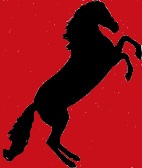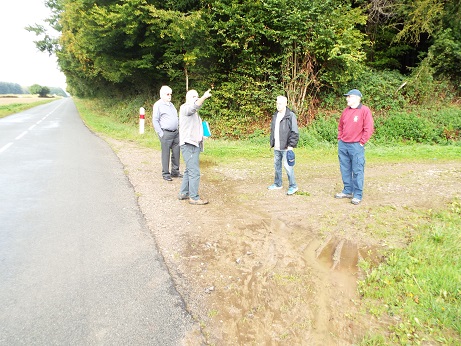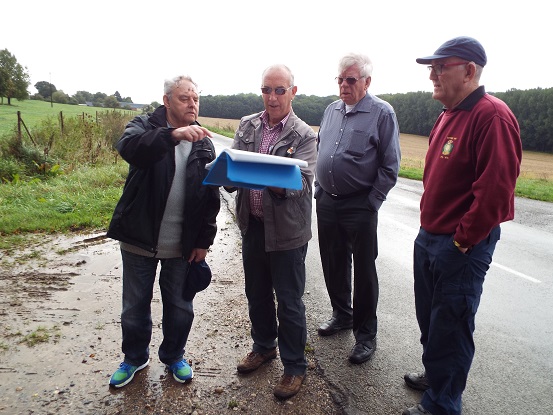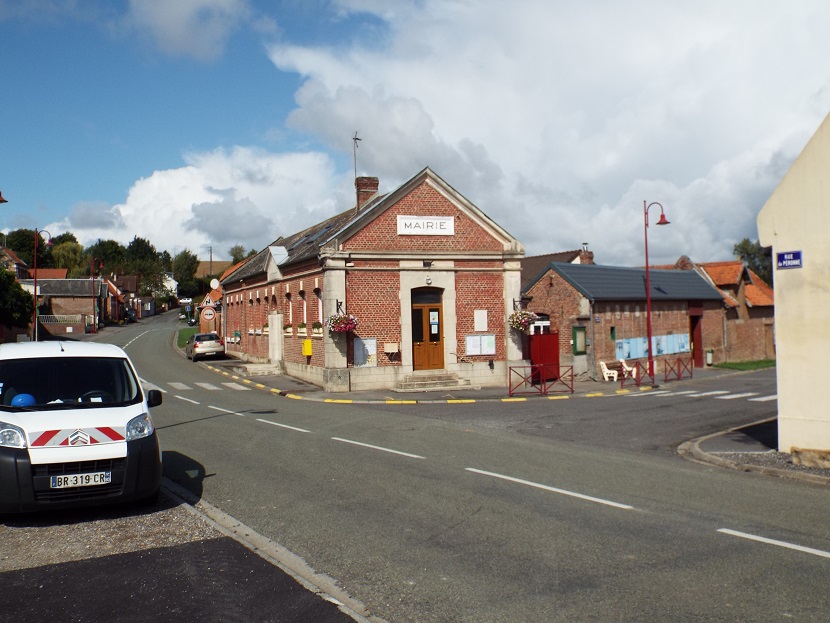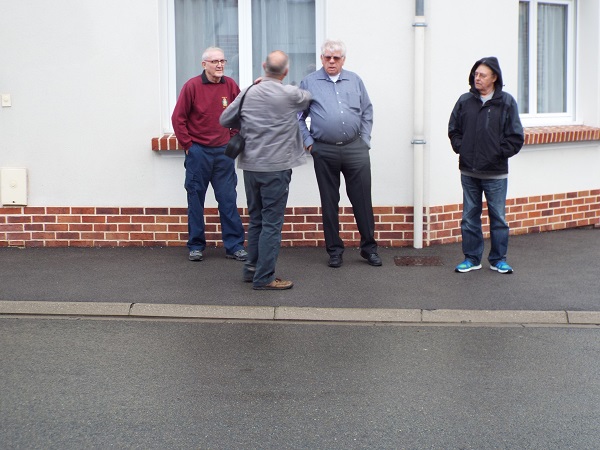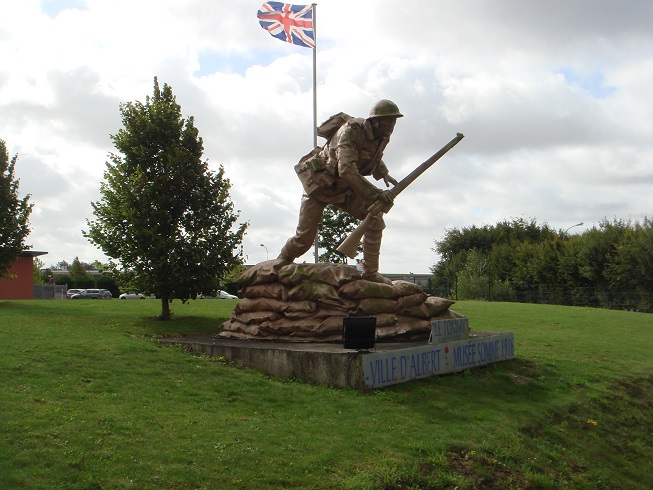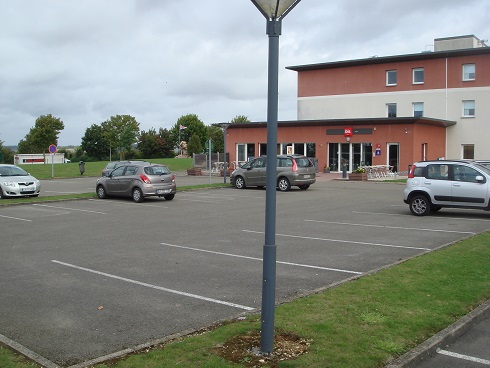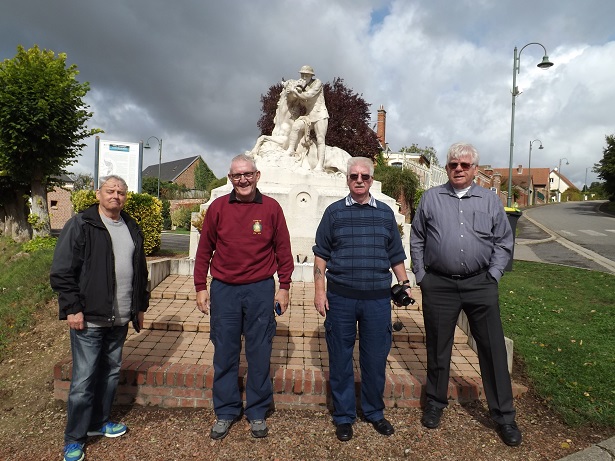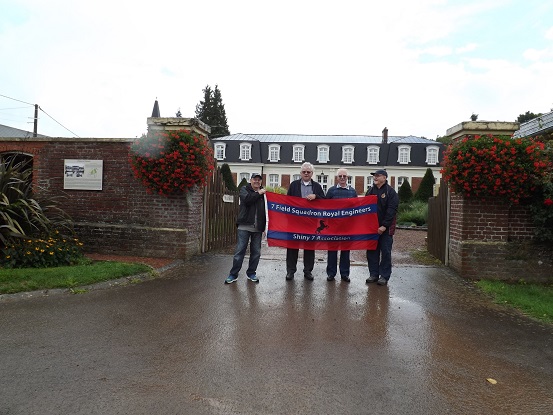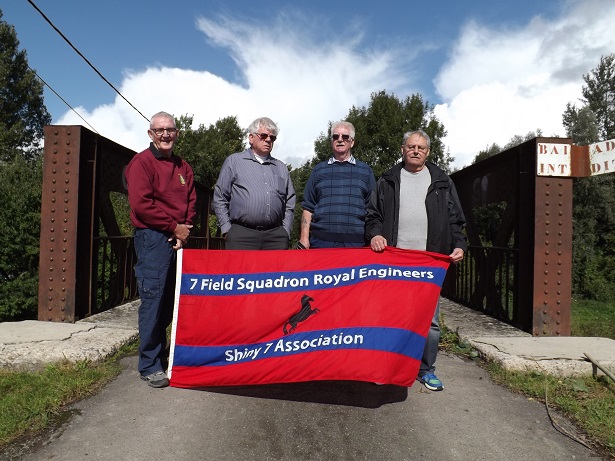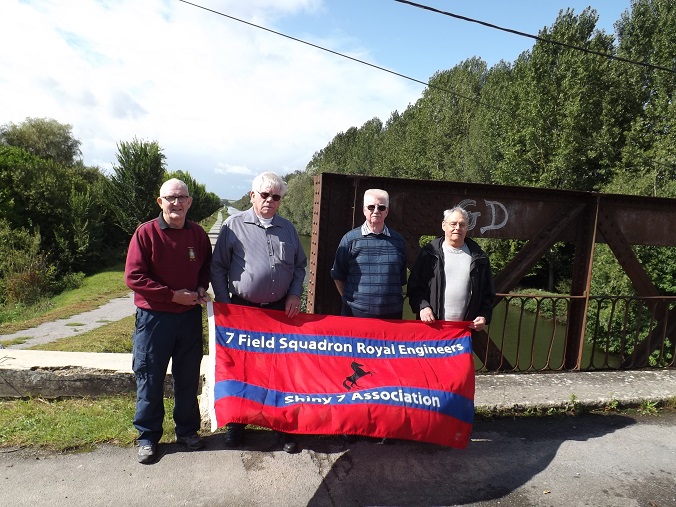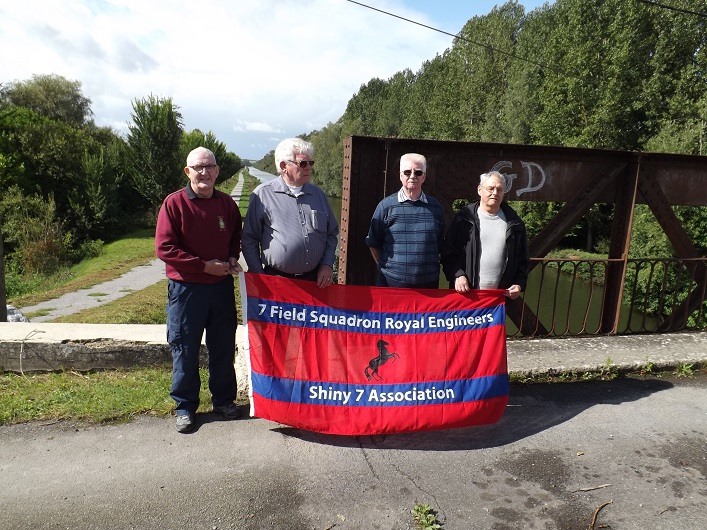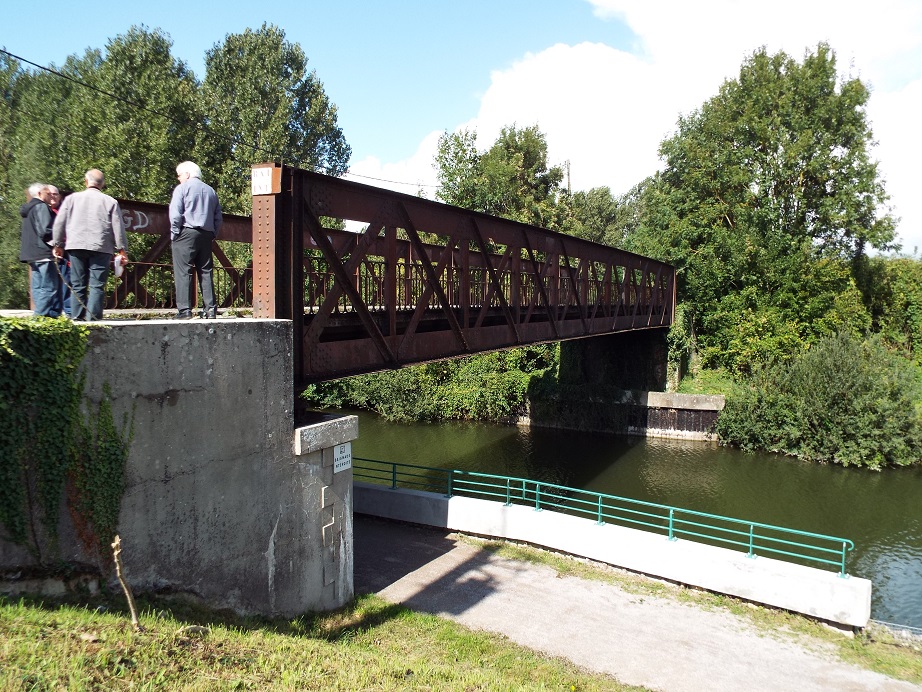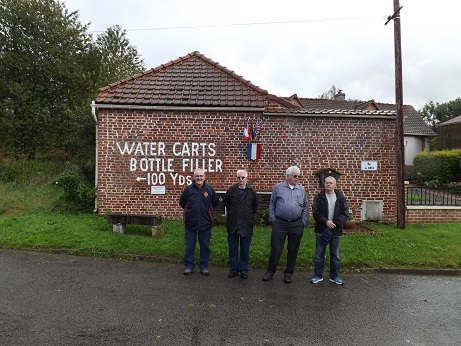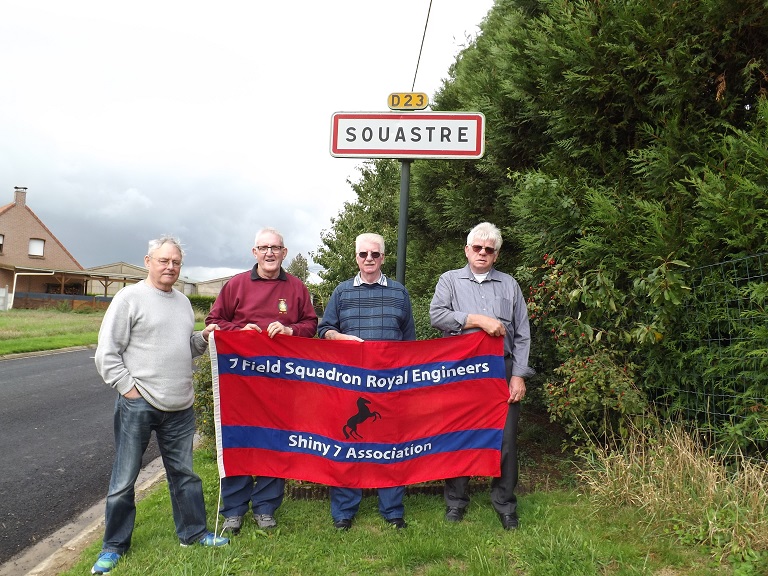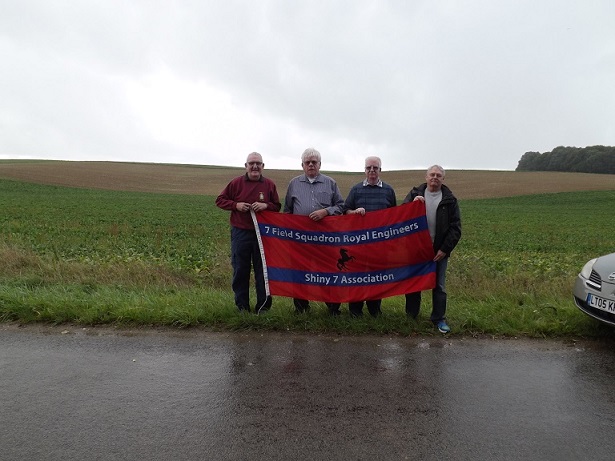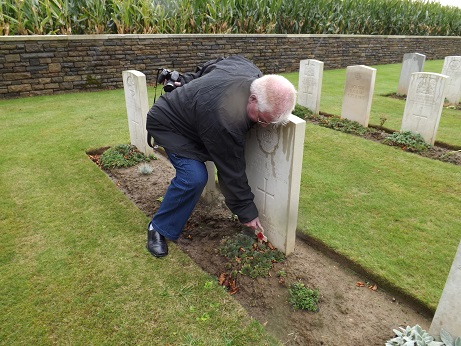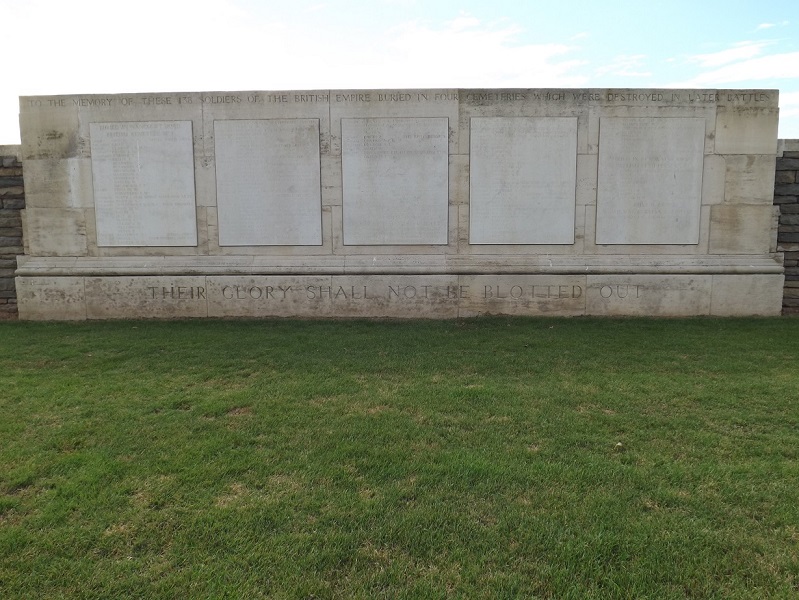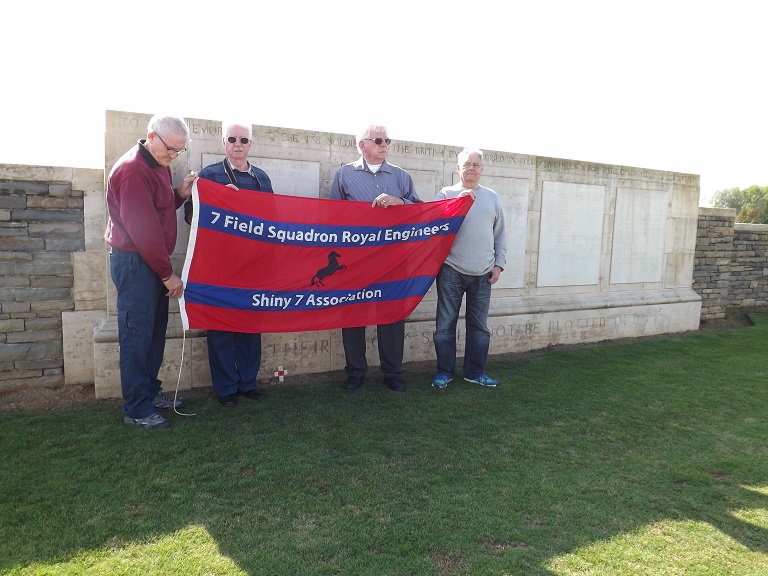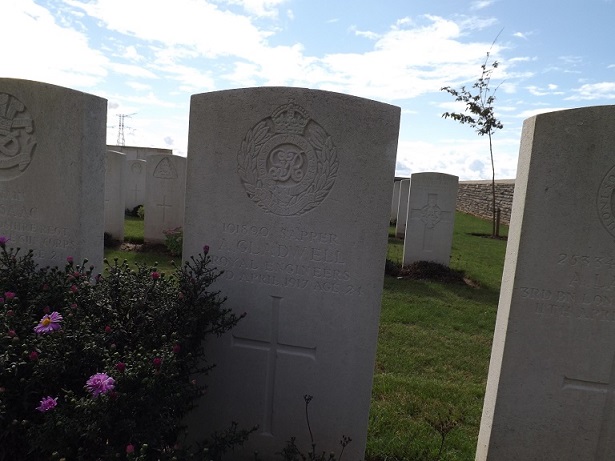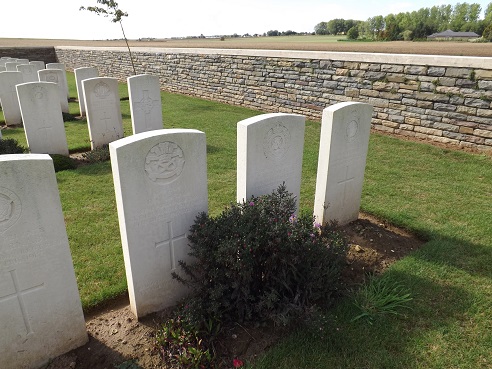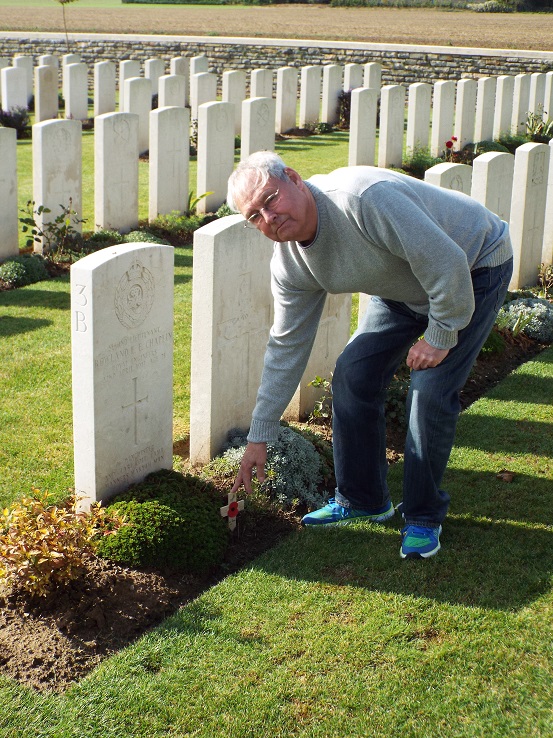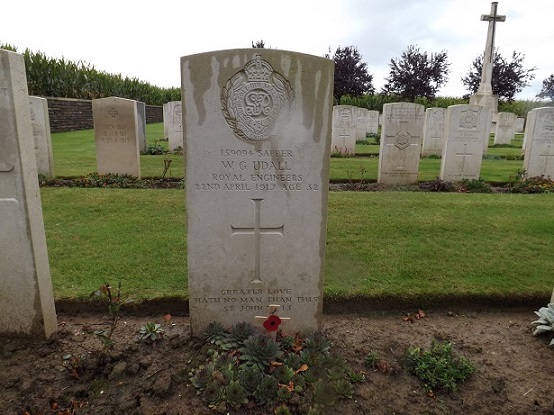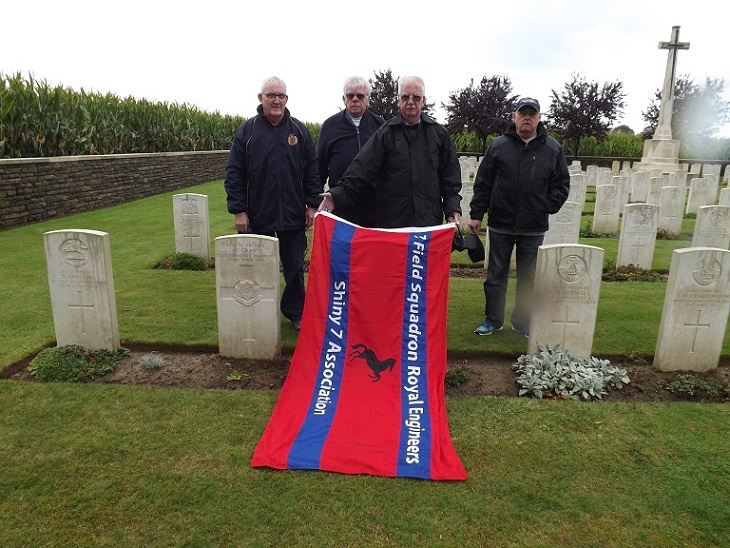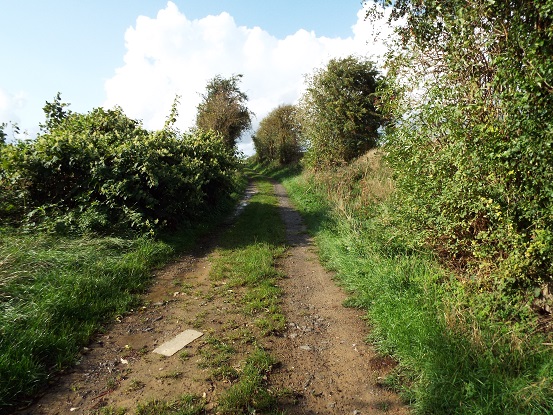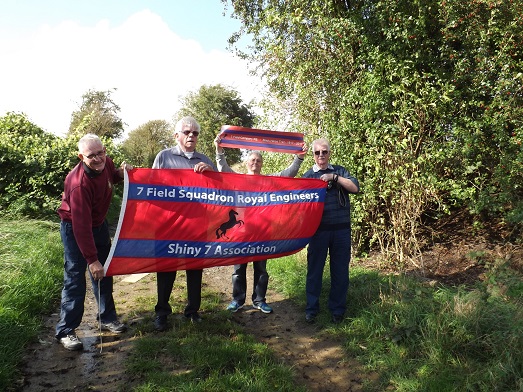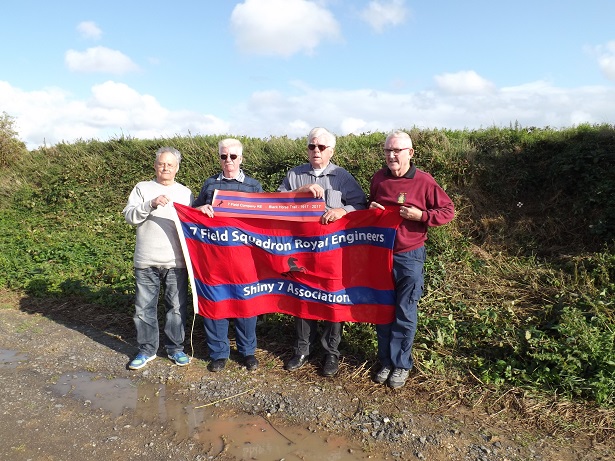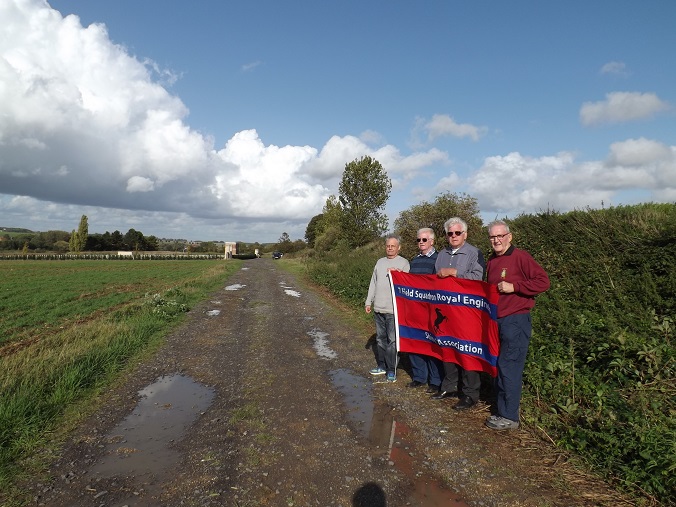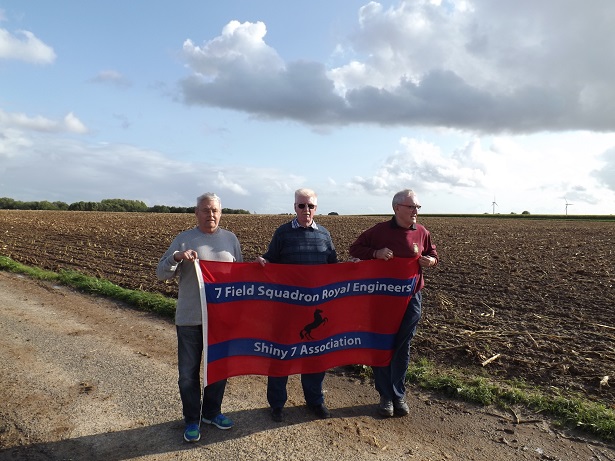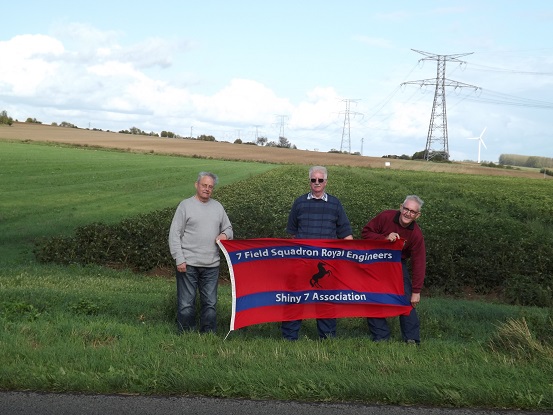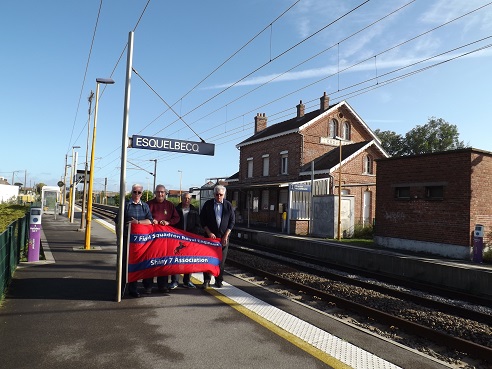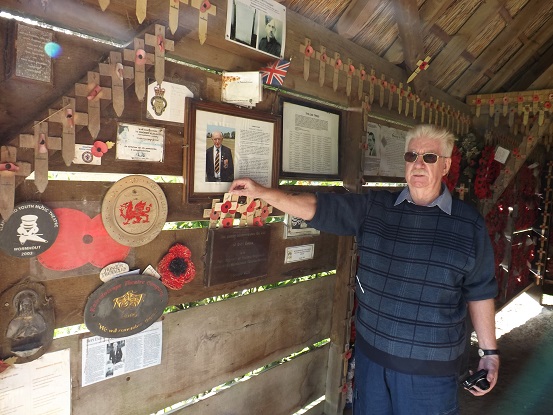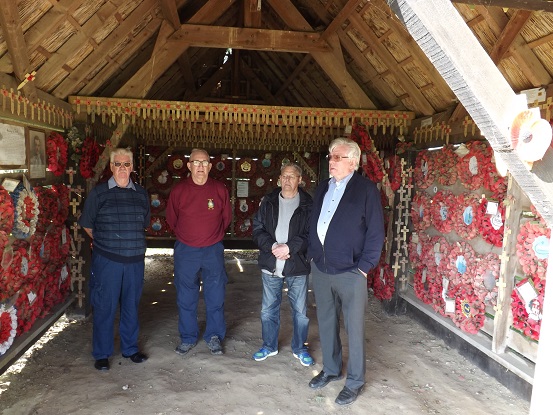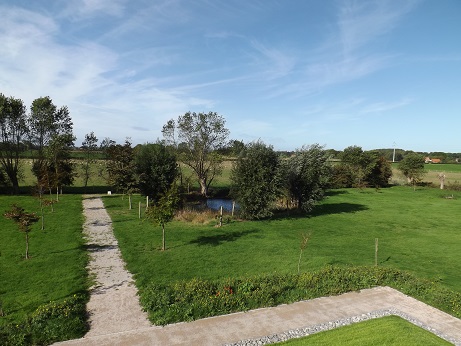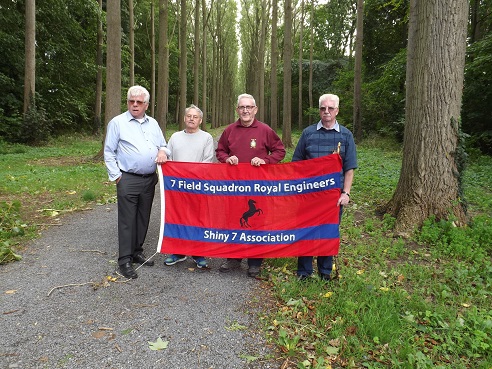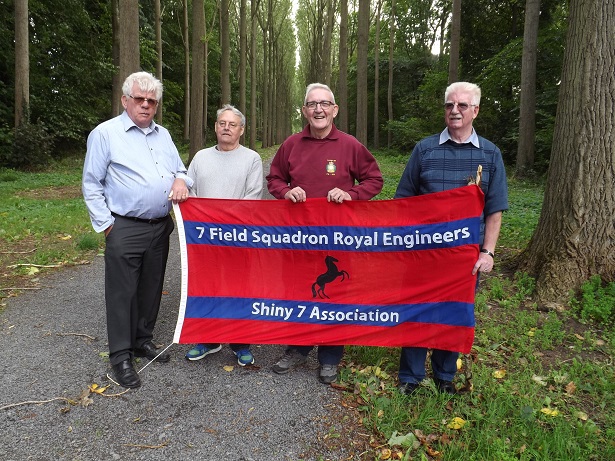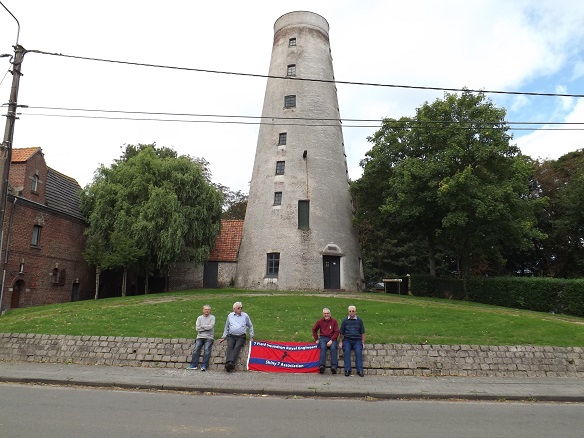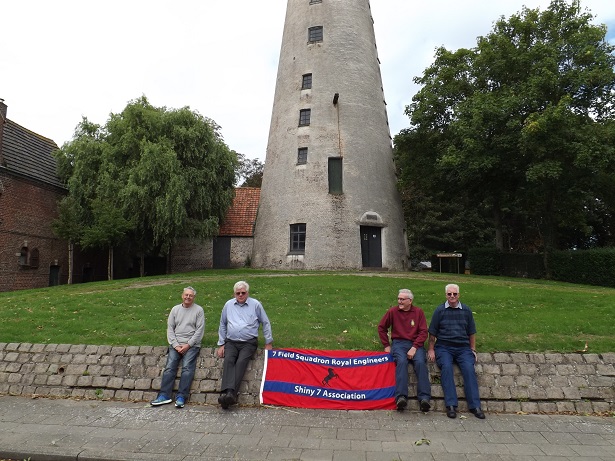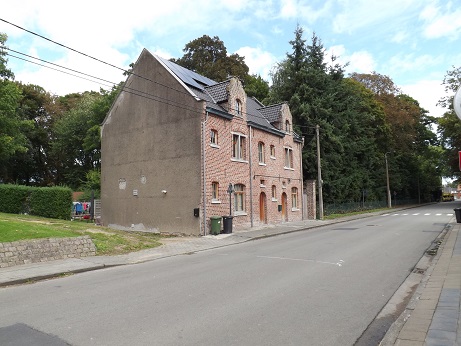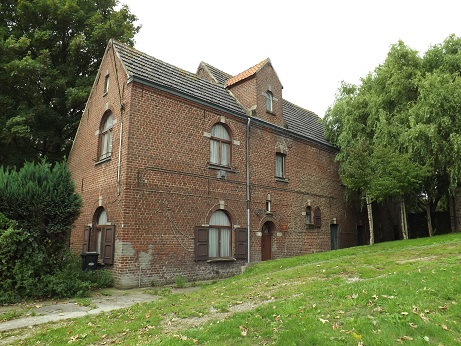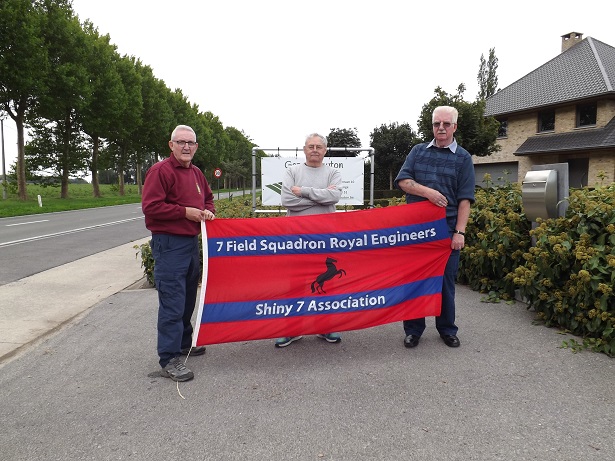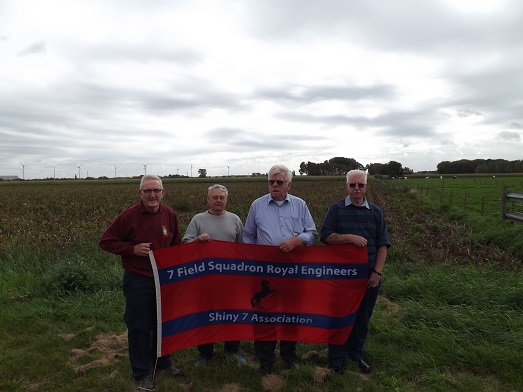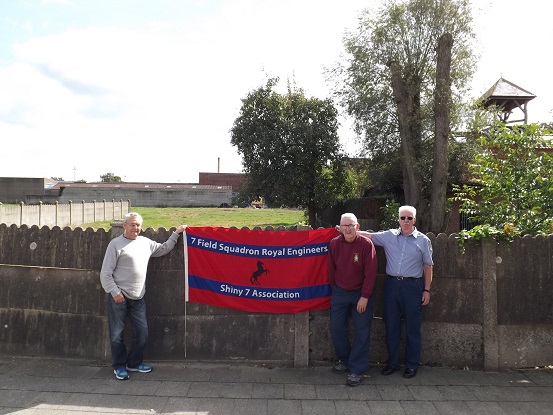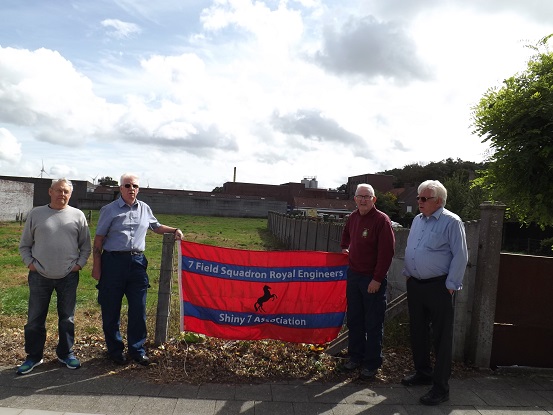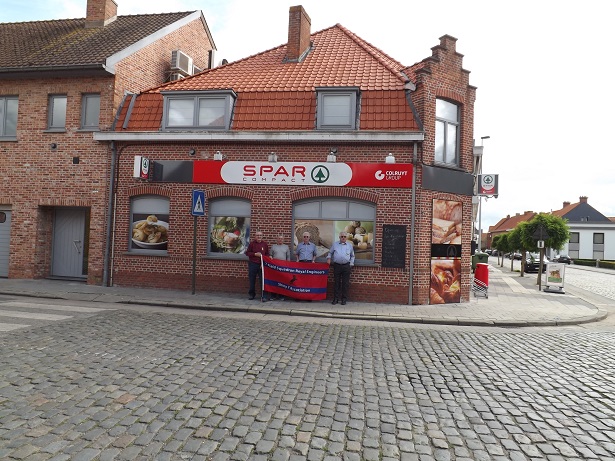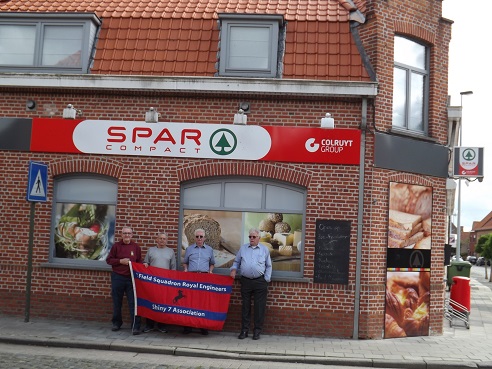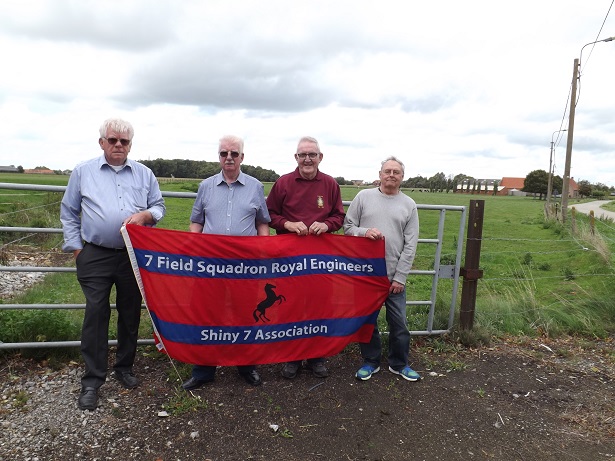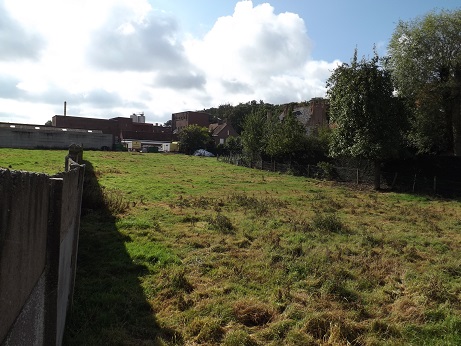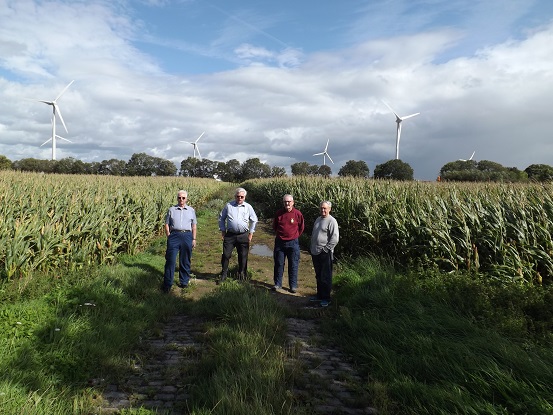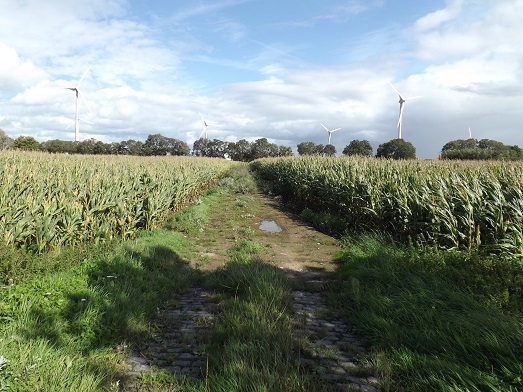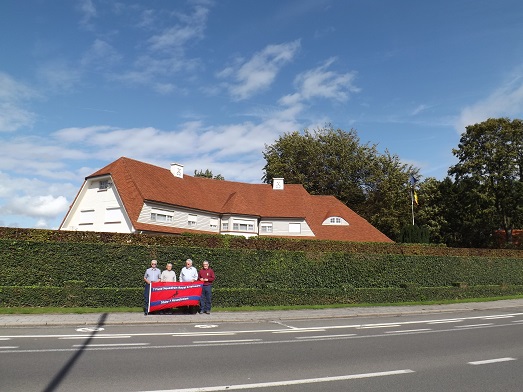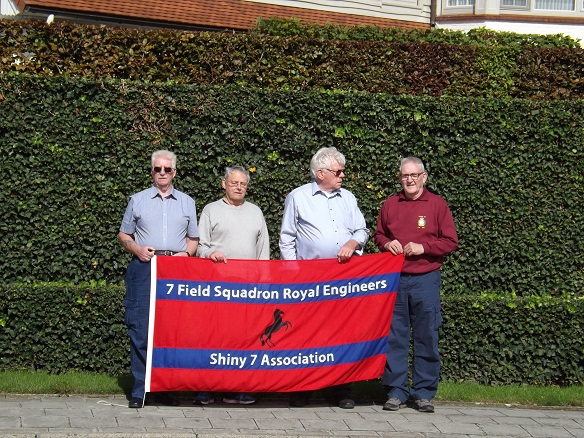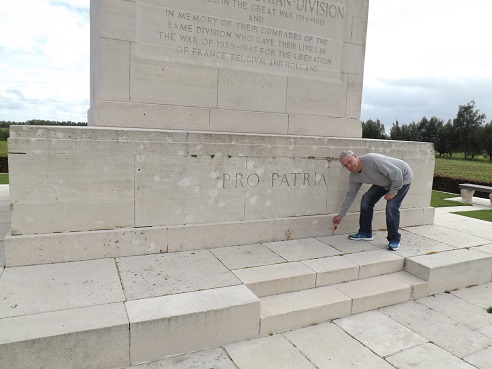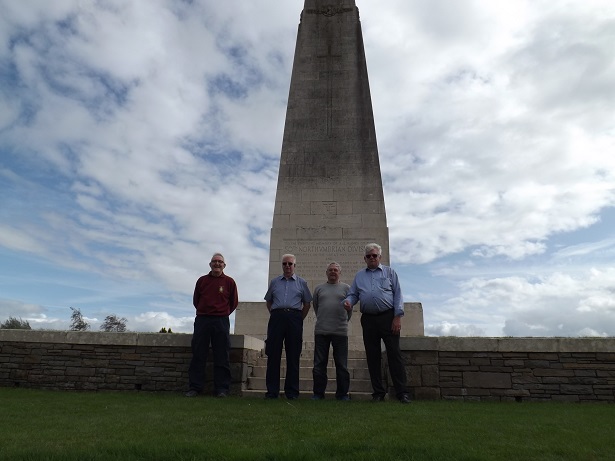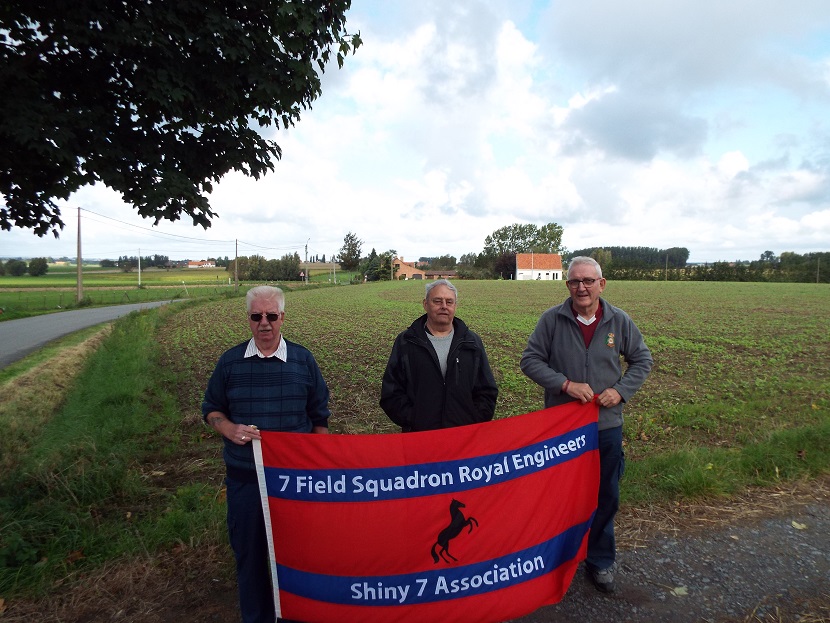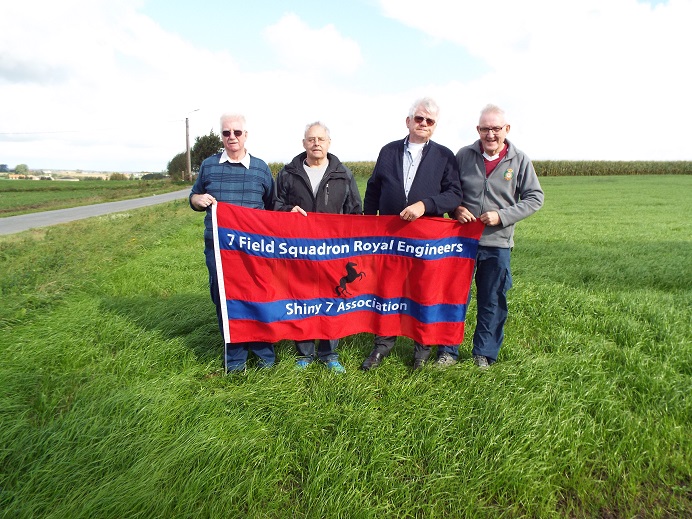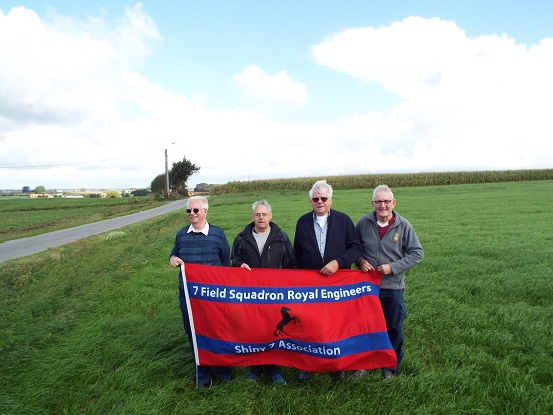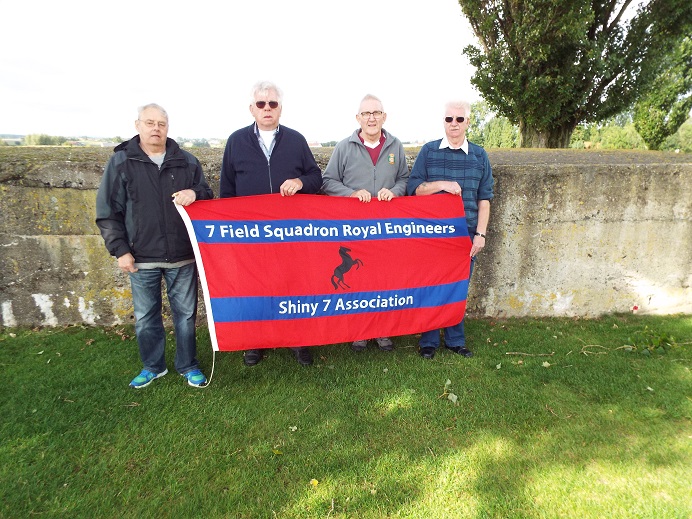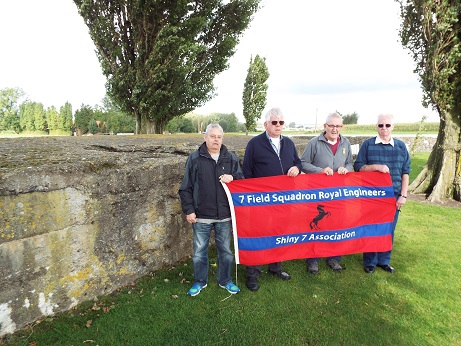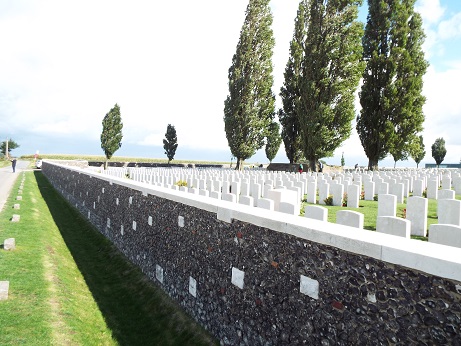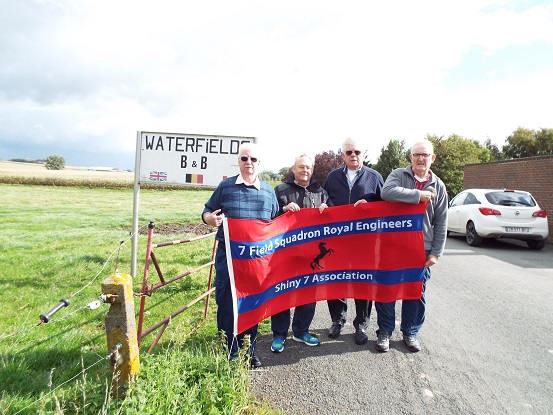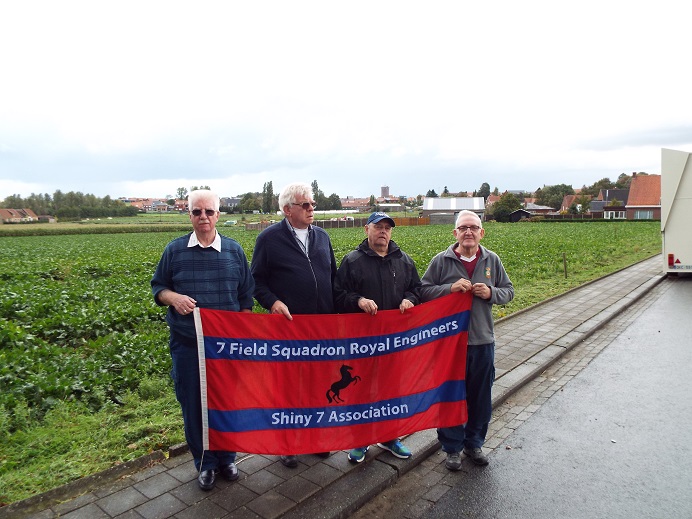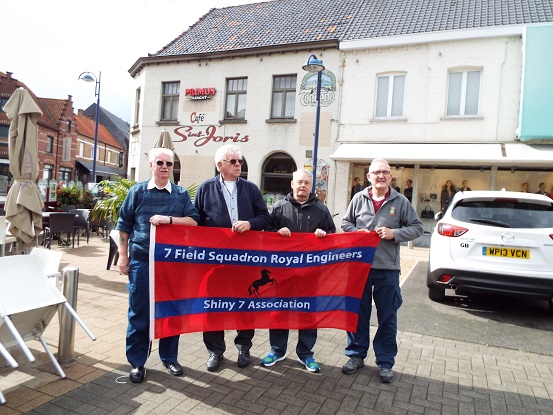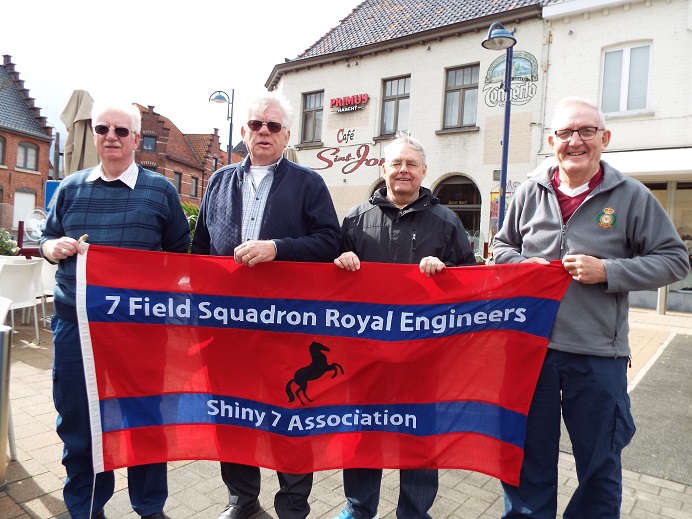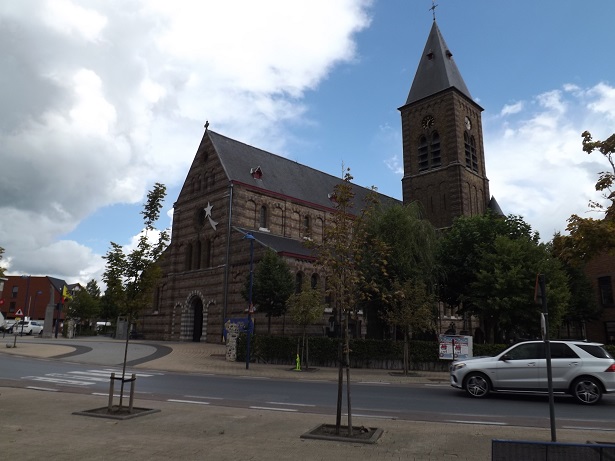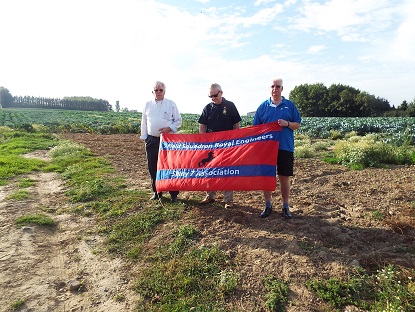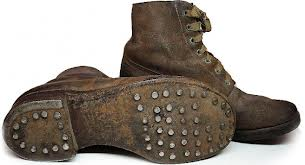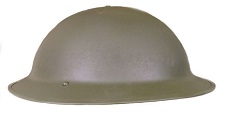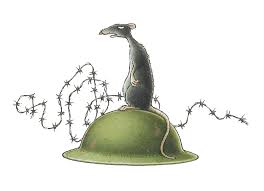The Black Horse Trail 2017 - 7 Field Company RE 1917 Revisited
Bazentin le Petit 12 Sep 2017
Rue des Illieux, Albert, France 12 Sep 2017
Above: On 9th Febraury 1917, Capt Glubb stood on this corner waiting for the horses coming from Becourt
Morcourt sur Somme, September 2017
7 Fd Coy Mounted section were billeted in this school March 1917
IBIS Hotel Albert, France.
The Black horse Trail 2017 stayed the first night at this hotel, located at the northern outskirts of Albert on the Bapaume road. It is close to Lochnagar crater and Becourt.
Feedback:
georgecowie103@yahoo.co.uk
Left:
The BHT stand on the Company's start point for the Battle Flers-Courcelette 15 September 1916. Shortly after this battle the surrounding area became the nucleus of III Corps Trench tramway system built and run by 7 Field Company and remained there until 29 January 1917. The road on the left is the Longueval - Contalmaison road. On the left of this road from the small bush to the point where the BHT are standing, 7 Coy built a tramway sidings running parallel with the road to take stores that came up by road.
BHT at Bazentin le Petit. The surrounding area was the admin area for the Trench Tramway.
Becourt chateau. 7 Coy main office was located nearby 31 August 1916 - 9 February 1917
Chippily memorial. Tommy saying goodbye to his horse
On the 13th and 14th March 1917, 7 Coy used this bridge for demolition training
On the canalised river Somme behind the Black Horse Trailers, 7 Company did pontoon bridging. This was welcome work after being in the trenches for over two years.
7 Coy were at Morcourt for 3 weeks, training for a new kind of warfare, mobile warfare. They were to join the newly formed XIII Corps. The new Corps commander told his units to forget trench warfare, ''its out of date'' he said. Following the battles of the Somme, it was believed that the Germans were severely weakened and that future battles would be more mobile. The training at Morcourt concentrated on Field Engineering and was a welcome change from trench warfare. They left this location on 30 March 1917 and marched in stages in Brigade formations to Arras.
This bridge is on the River Somme just outside Cerisy near Morcourt
Left:
While 7 Company were at Souastre training and resting just prior to their second visit to the trenches east of Arras, they built a 200 yard firing range with moving targets near Coigneux. The range they built was immediately behind the Trailers.
7 Coy trained and rested at Souastre 24 May - 15 June 1917.
This building with the sign still standing today at Couin near Coigneux.
159094 Spr W.G.Udall Killed in Action 22 April 1917 age 32
Memorial Panel London CWG Cemetery Neuville-Vitasse
Spr Gladwell's grave front row 3nd from right
2nd Lt Littlewood MC's grave
Black Horse Trail 2017 at the Memorial Panel in London CWGC, Neuville-Vitasse
The sappers are commemorated on the left hand panel.
Above; The names of the sappers killed on 22nd April and 10 July 1917 (2nd Lt Littlewood MC), near Wancourt. They were originally buried in Wancourt Road cemetery, however, the cemetery was later destroyed by shell fire and are now commemorated in London CWGC Neuville-Vitasse. Lt Chaplin and Spr Gladwell, killed on 22 April 1917 are re-buried in the cemetery
Above: 101890 Spr A. G. Gladwell's grave. K.I.A. 22 April 1917
Right: 2nd Lt C.W.S. Littlewood, MC. K.I.A. 10 July 1917. Ian places a poppy cross on his grave.
The Company main HQ was located in this sunken lane between Neuville-Vitasse and Wancourt 13-26 April 1917
Nos 2 and 1 sections constructed a Bde HQ and RAP dugouts in this bank 22/23 April 1917. It was at this area behind the BHT group where No 1 section commanded by Lt Chaplin were finishing work 4 am on the 23rd April when a shell landed in the group killing Lt Chaplin, eight sappers and wounding eight more.
Wancourt
In the field 80 yards behind the BHT was the site of Wancourt Tower, which No 3 section commanded by Lt Littlewood demolished with guncotton to deny it being used by the enemy in an expected counter-attack, 16 April 1917.
Wancourt bridge visited. This bridge was strengthened by the Company
with a second bridge built a few yards farther upstream on 23 April 1917.
On the right, several infantry foot bridges were built.
The pylon behind the BHT group was the site the Company built a Divisional HQ at short notice, having first to march 13 miles to get there. 2 May 1917. Neuville-Vitasse.
A picture albumn of the Black Horse Trail (BHT) 1917-2017
The Company detrained at this station 8.am, 18 October 1917 following their time at Arras.
Outside Esquelbecq village is the WW2 site where the 2nd Warwicks captured on the retreat to Dunkirk, were herded into a barn and murdered by rifle fire and stick grenades. The BHT visited the site.
Two men escaped from the barn and hid in this now, reduced pond. They were both shot, however, one of them, feigned death, survived and was later treated at a local hospital.
7 Field Company HQ and two sections were located near Elverdinghe Chateau in October-November
White Mill Camp. This was the Rear Brigade HQ Camp. It is close to Elverdinghe Chateau, which was the 50th Division's HQ. The Company repaired bomb damage here October- November
Rear Brigade HQ. Further up on the left is Elverdinghe Chateau.
Part of White Mill Camp. There were also hutments in the camp.
Mouton farm. 7 Field Company built horse standings-stables on this farm for the Royal Field Artillery (RFA) November 1917. Other farms visited, Rousel, Cardeon, Caribou, and Dewitte Carabet.
235 yards behind the BHT stood Dublin Camp. The Company build a large 'Adrian hut' here in October 1917.
Behind the BHT, was the location of Ondank Dump, XIX Corps RE Dump in Boesinghe. No 3 section took it over on 23 October and made RE stores, mainly Duckboards that were much needed to cross the boggy ground to the front.
Ondank RE Dump site, Boesinghe
24-29 October 1917, on the site and behind the Spar shop, No 2 section built an RE Dump, clearing and levelling with access for lorries.
Crossing Lodge. The mounted section was located in this area October-November
The BHT stand on what was known as Bard Causeway. At the end of this track at the Yser (Ypres) Canal, the company built another 50th Division RE stores dump. The mounted section used this track to deliver stores from Boesinghe to the dump next to the canal.
Bard Causeway
December 1917-22 February 1918. The site where this large building stands is where the main Company HQ and some sections were located in huts for most of the above period.
Ian placing a poppy cross on 50th Division memorial at Wieltje
The BHT at the 50th Division memorial at Wieltje, Belgium
The area behind the BHT was the site of Seine Camp, which the Company built 20 shelters
The Black Horse Trail stand on the site of a RAP Dressing station that encroached in the bottom left corner of Tyne Cot cemetery
The BHT stand on the RAP site. Behind them right of the pole is where Hamburg Camp stood. The Company built 26 shelters there in December 1917.
The BHT in Tyne Cot cemetery
This preserved German pillbox is inside Tyne Cot cemetery. It is inside the boundary of the RAP Dressing station the Company built. They adapted pillboxes into dressing rooms and it is almost certain this pillbox was adapted into a dressing room as part of the RAP.
Bottom left corner of Tyne Cot cemetery.
The pillbox stands inbetween the trees
The Company laid a double Duckboard track on piles starting from Waterfields farm and finishing in Passchendaele.
The Haalen switch line where the Company built six strongpoints was visited again in 2017.
The Duckboard track finished in Passchendaele behind where the BHT are standing.
Passchendaele centre:
The Cafe behind the group is where some of the Company was located in early 1918. The BHT 2017 finished at this point and enjoyed delicious cakes and coffee in there.
Passchendaele church
The BHT outside the Cloth Hall in Ypres before attending the Last Post ceremony in Menin Gate 13 September 2017. Don't they scrub up well ?


